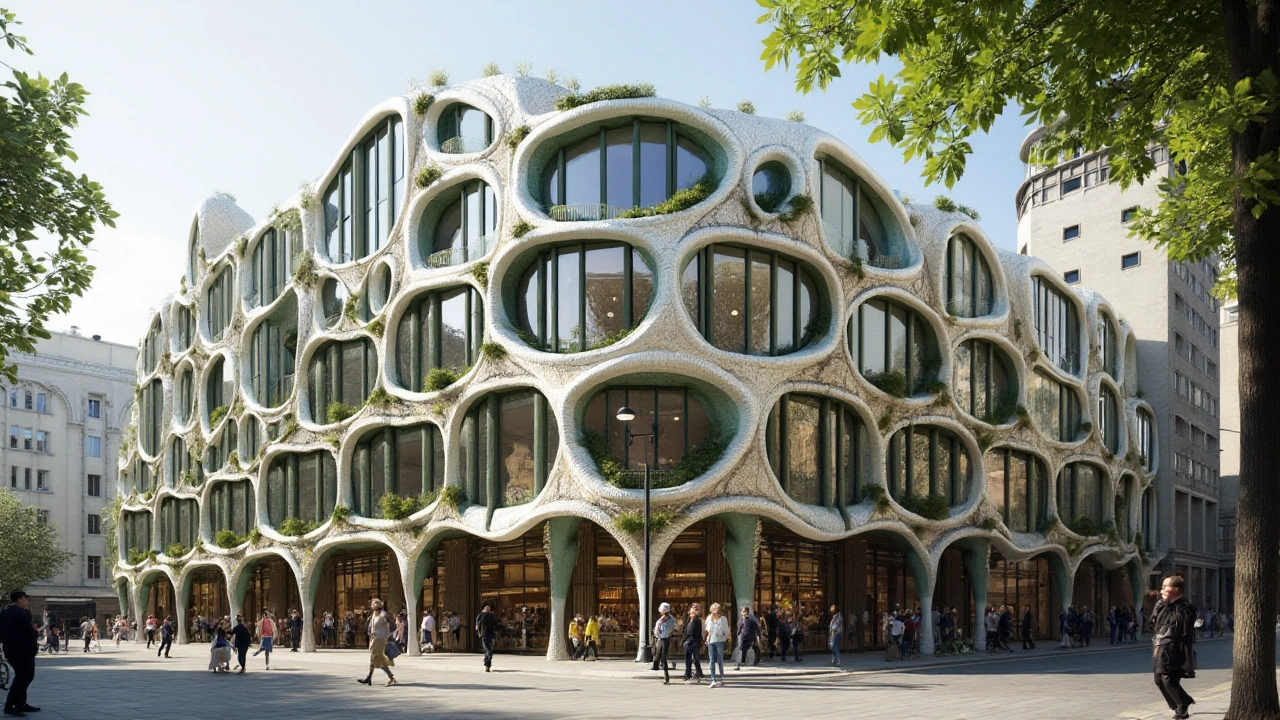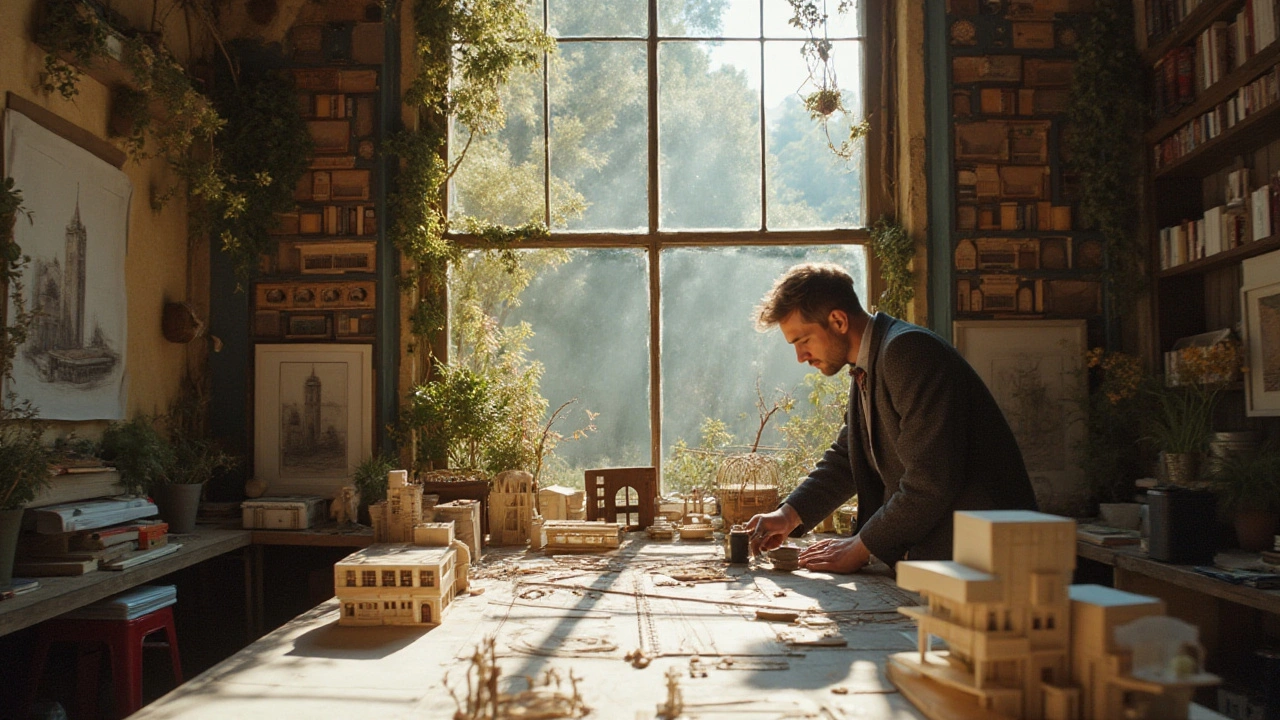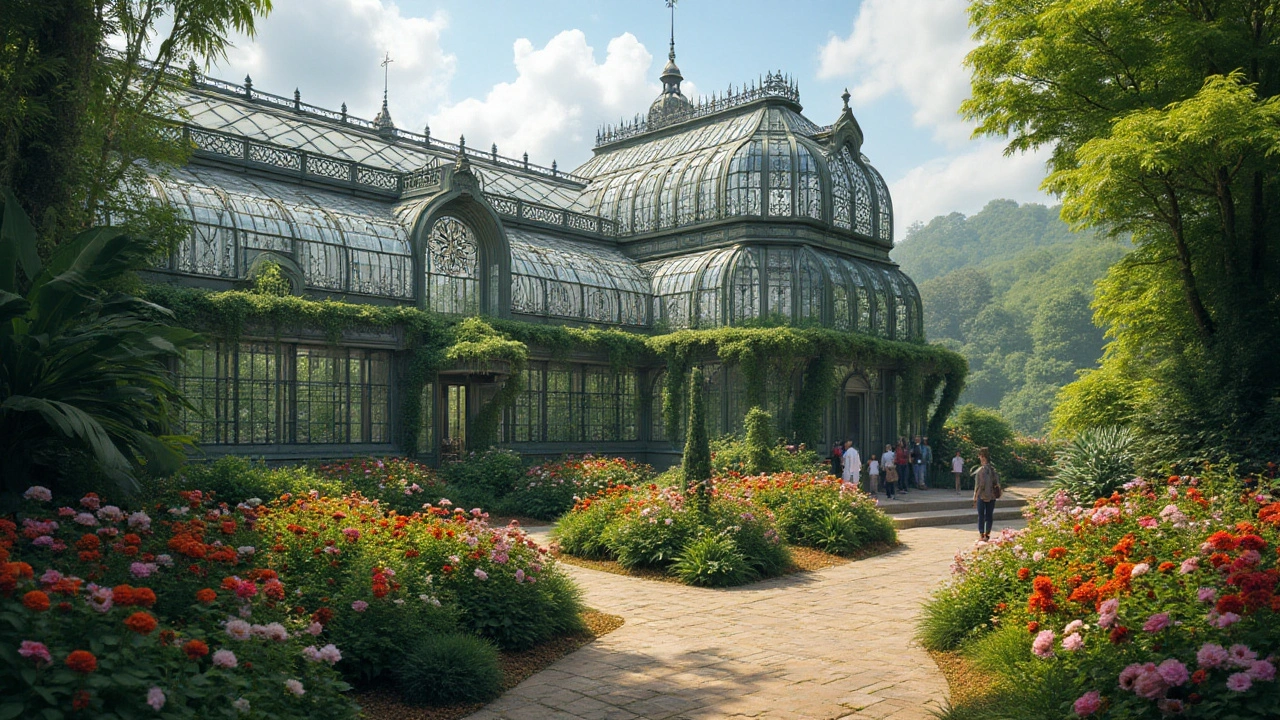Art Nouveau Architecture's Impact on Contemporary Design Trends
 Jan, 25 2025
Jan, 25 2025
Art Nouveau, often recognized for its graceful forms and harmonious relationship with nature, reshaped the architectural landscape at the dawn of the 20th century. Encompassing more than mere aesthetics, this movement was rooted in the desire to break free from the strictures of industrial design, embracing instead a new realm of creativity and individuality.
In today's world, the echoes of Art Nouveau's organic architecture resonate through modern design practices. From the subtle curves of contemporary buildings to innovative materials that mirror the era’s manual craftsmanship, the influence of this artistic revolution remains palpable. Designers and architects, inspired by the past, creatively reinterpret its foundational principles, breathing life into spaces where the past and present seamlessly intertwine.
- Origins and Characteristics
- Key Influences on Modern Design
- Contemporary Adaptations
- Icons and Inspirations
Origins and Characteristics
The Art Nouveau movement, which flourished between 1890 and 1910, was an artistic revolt against the established norms of the Victorian era. This pivotal period emphasized a new artistic language, veering away from the heavy, formal styles of past centuries. Instead, it drew inspiration from natural forms, showcasing an elegance characterized by flowing lines, organic shapes, and intricate architectural detail. This movement was not isolated, as it simultaneously developed across Europe, with each region embracing its own iteration, yet remaining firmly united in its underlying principles. The style became synonymous with harmony and the blending of functionality and art, allowing architects to express their creativity without restriction.
At the heart of Art Nouveau architecture were various motifs drawn from nature itself—vines, flowers, and insect wings were frequently used. These organic patterns were not mere decorations, but integral to the structure's very essence. Recognizing this profound connection, Gaudí once observed, "The straight line belongs to men, the curved one to God." Such sentiments capture the ethos of an era committed to bridging art with environment. Architectural features like undulating facades, stained glass windows, wrought iron, and asymmetrical forms became the hallmark of the movement, leading to the creation of some of the most iconic buildings of the era.
Perhaps what set Art Nouveau apart was its celebration of craftsmanship and artisanship. The movement encouraged collaboration between architects, artists, and artisans in pursuit of integrated design. This synthesis is epitomized in architectural masterpieces like Brussels' Hôtel Tassel by Victor Horta. With its use of open floor plans, fluid space, and innovative materials, the building serves as a testament to the inventive spirit of the time. These structures, especially public buildings and private homes, were designed to be total works of art. Inside, every detail from the door handles to the ceilings was thoughtfully crafted to ensure continuity in design.
Whereas the style flourished in many European countries, each region interpreted it in its own unique way. In France, Hector Guimard's Parisian metro entrances epitomized the movement's essence in urban architecture, while in Vienna, Otto Wagner embraced a more restrained, geometric style with the same underlying principles. In Britain, the movement took on a more understated form, closely tied to the Arts and Crafts movement. These diverse expressions helped to weather criticisms of Art Nouveau as merely decorative, anchoring it as indispensable in the progression towards modernism. It was the delicate balance of the ornamental and the functional that ensured its lasting legacy.
This intricate dance of art and functionality gave Art Nouveau its staying power in the canon of architectural design. By embracing elements of Gothic revival, Japonism, and other styles, it forged a new path forward, influencing generations of architects and designers who followed. Yet it wasn’t just the big names and monumental buildings that defined the period—the democratization of design brought touches of Art Nouveau into ordinary households, through furniture, lighting, and decor. This accessibility laid the foundation for a broader acceptance and appreciation of design as part of everyday life, a perspective that's echoed in the integration of art and architecture today.

Key Influences on Modern Design
When we examine how Art Nouveau has left its enchanting mark on modern design, the evidence is as transfixing as the intricate details it championed. One of the most significant influences is the seamless integration of organic motifs and forms. Modern architecture often adopts the nature-inspired elements characteristic of Art Nouveau, weaving floral patterns, undulating curves, and flowing forms into the very fabric of contemporary structures. This return to nature, cherished by designers at the turn of the 20th century, is now mirrored in the biophilic designs that seek to harmonize indoor and outdoor environments. Architects push for sustainable solutions, echoing Art Nouveau's focus on craftsmanship and natural materials, proving that beauty and environmental responsibility can coalesce.
Another profound aspect of Art Nouveau's influence lies in the realm of expressive, individualized style. The movement rejected the homogeneity of industrialization, advocating for unique artisanal touches that set each structure apart. Modern design philosophy embraces this ethos, encouraging personalization and creativity. This approach has birthed a new era of experimental architecture, where designers are unshackled from convention, mirroring the way Art Nouveau artists crafted bespoke pieces that stood out in their intricacy and innovation. Groundbreaking designs today often underscore their distinctiveness, drawing directly from the decorative extravagance and bold individuality that defined a bygone era.
New Materials, Timeless Designs
Art Nouveau's influence on modern design also extends to the innovative use of materials. At its peak, the movement celebrated the use of glass and wrought iron, marked by structures like the Paris Métro entrances. Today, there’s a rich legacy in these choices that informs existing architectural practices. Architects and designers now employ advanced materials—ranging from sustainable composites to smart glass—that echo this historic celebration of form and function. These new-age materials often combine traditional aesthetics with contemporary technology, leading to creations that are as functional as they are visually striking. The essence of Art Nouveau’s embrace of the exotic and revolutionary in materials suggests a lineage where contemporary design continuously strives for such a balance.
Finally, embracing Art Nouveau's insistence on crafting spaces as total works of art has also profoundly influenced modern interiors. The concept of gesamtkunstwerk, or "total art," permeates today's design lexicon as professionals aim to create cohesive, immersive environments that move beyond mere functionality. From the harmonious flow in open-plan living spaces to the meticulous attention to detail in every element of the interior, modern design takes cues from this integrated approach. This includes the incorporation of customized artwork, bold textiles, and bespoke furniture that reflects Art Nouveau’s cardinal belief that every detail, no matter how small, contributes to an overarching narrative.

Contemporary Adaptations
As we delve into today's architectural landscape, the enduring influence of Art Nouveau becomes unmistakably apparent. The movement, which celebrated nature, fluidity, and ornamental design, continues to inspire architects and designers in innovative ways. In an era characterized by sleek modernity and digital innovation, the adoption and adaptation of Art Nouveau’s principles present a unique blend of tradition and future-forward thinking.
Art Nouveau's distinct aesthetic, with its curvilinear forms and nature-inspired motifs, offers a stark yet charming contrast to the minimalism that dominates contemporary design. These adaptations are often seen in urban environments, where architects seek to introduce warmth and organic beauty amidst concrete and steel. Many contemporary buildings integrate these elements subtly, choosing to use Art Nouveau-inspired facades or interior features that gently nod to the past. These elements are not just decorative; they deepen the connection between the built environment and the natural world, a foundational tenet of the original movement.
Intriguingly, one significant aspect of contemporary adaptations is the reinterpretation of materials. While early 20th-century artisans primarily worked with wrought iron, glass, and natural materials, today's designers have access to advanced technologies that allow these classic designs to be replicated in more sustainable forms. Modern materials that mimic the look of hand-crafted stone or wrought iron provide architects with the ability to achieve the desired aesthetic impact without compromising on durability or sustainability. This meld of innovation and nostalgia can be transformative, yielding structures that are both modern in utility yet classical in spirit.
"Art Nouveau continues to inform the dialogue between tradition and innovation. The ability to draw inspiration from a century-old design philosophy while leveraging contemporary technology is what defines great architecture today," noted renowned architect Zaha Hadid.
Technology and Art Nouveau
The integration of technology has revolutionized how Art Nouveau principles are applied today. For instance, advancements in 3D printing have enabled the recreation of complex patterns and organic shapes that were once labor-intensive and costly. This technology makes it possible to produce intricate designs in a fraction of the time, pushing the boundaries of what is possible in both small-scale decor and large-scale architecture. Furthermore, the fusion of digital design software with artisanal approaches ensures that the core of Art Nouveau—emphasizing craftsmanship—remains intact in a digital age.
Moreover, urban planners and developers now often incorporate Art Nouveau elements to enhance public spaces. By incorporating the movement's distinctive curves and botanical motifs, cities come alive with color and texture, fostering a sense of community and curiosity among inhabitants. This strategic use of design not only beautifies neighborhoods but also pays homage to architectural history in a manner that invites exploration and reflection.
Icons and Inspirations
When discussing the architectural marvels that epitomize Art Nouveau, one cannot overlook the genius of Antoni Gaudí. The Spanish architect, known for transforming the skyline of Barcelona, crafted buildings that seemed to pulsate with life. His magnum opus, the Sagrada Família, remains a testament to the possibilities of organic architecture. This cathedral, still under construction, exudes a tangible harmony with nature through its flora-inspired columns and intricate facades. Gaudí believed that ‘nature is the mistress and all your learning lies in understanding her’, and his work embodies this philosophy, drawing direct inspiration from the sinuous forms and colors found in the natural world.
Across the continent, another luminary of the movement, Victor Horta, imbued his buildings with a sense of fluid elegance. His work in Belgium, particularly the Hôtel Tassel, introduced a seamless blend of structure and decoration. The architecture of this era, filled with elaborate wrought iron details and organic lines, suggested a departure from the past’s rigid frameworks. Horta’s structures were meticulously crafted, with every element from door handles to mosaic floors considered part of a holistic design narrative. An example of how design integrated into everyday life, his architectural approach underscored the belief that art should be democratic, accessible, and part of the everyday environment.
Art Nouveau’s inspirations did not stop at the European borders. The influence spread globally, touching architects across continents and eras who adapted its principles in diverse ways. In the United States, Louis Comfort Tiffany embraced this aesthetic in his stained glass creations, which today continue to captivate audiences with their lush colors and intricate patterns. Tiffany lamps, for instance, became iconic, representing a tactile expression of nature's beauty suspended in glass and metal.
‘Color is to the eye what music is to the ear’, Tiffany once mused, reflecting the synesthetic experience of his designs.
The legacy of Art Nouveau is not just preserved in architectural heritage sites, but it retains vitality through contemporary echoes. Modern designers such as Zaha Hadid and Frank Gehry, though employing radically different materials and techniques, often draw comparisons for their flowing, almost sculptural buildings. In art and architecture colleges today, students study this movement not as a historical curiosity, but as a source of enduring inspiration. By celebrating the union of form and function, and nature and technology, Art Nouveau continues to remind us of the power of creativity in our built environment. In one of Gehry’s interviews, he highlighted the importance of creating spaces that feel alive: ‘Every room has its own story to tell.’ Their work, though on the cutting edge of modern design, resonates with the past in a way that is rich with history and ripe with imagination.